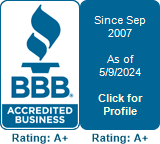Petty Cash: 4 Steps To Manage This Small But Important Tool
Does your business keep and properly account for petty cash? While petty cash may be a minor part of your operation, it's an important tool to have around. How should you be handling and accounting for your petty cash? Here are a few steps to follow.
1. Assess Your Needs
First, how much petty cash should you have? There is no one answer to this question, as it depends on your business size and what tends to come up. However, the best approach is to be conservative about using petty cash. Cash can disappear or be abused. The more you have, too, the more work you'll have to do to track it.
If you have recurring needs, consider alternatives like opening a vendor account or using company credit cards. This is especially important if you find it being used for larger purchases. These will drain petty cash too fast, resulting in either reimbursing it too often or having too much cash on hand.
2. Track Transactions
Make a log to be used each time someone takes cash. This log should include the date, who took the cash, what it was for, how much was taken, and how much was returned. Place any related receipts with the log for later reference.
Place a responsible employee in charge of maintaining the cash and its records. While the security of your cash is undoubtedly important, the same emphasis should be put on tracking it accurately. Without good records, there is little accountability or accuracy. That could easily mean frustration, extra work, and even losing money.
3. Reconcile What's Left
Once petty cash gets low, it's time to reconcile it. The bookkeeper reconciles the amount of cash that actually remains versus the remaining balance on the tracking log. Hopefully, these two numbers match. Receipts, along with the details logged when employees used the money, help the bookkeeper categorize the various expenses into the right expense accounts.
This step is vital. It's how you ensure that your company has accurate records of expenses. Petty cash may be small, but it adds up. If you regularly buy last-minute supplies for jobs but fail to attribute those transactions to the jobs, you really don't know how much you're spending on each one.
4. Reimburse Petty Cash
Now that you've reconciled, reimburse the petty cash fund for what has been taken. This is usually done by issuing a company check to cash at the bank. The most efficient way to do this reimbursement is to enter all the different expense accounts when creating the check. Essentially, this process then charges those expenses to various accounts so that they are all tracked.
Some companies, though, separate reconciliation and reimbursement into two steps. They create the check for the desired amount, using a temporary expense account. Later, the bookkeeper uses a general ledger entry to move those expenses into their correct locations.
Pay attention to how much and how often you reimburse your cash. You may need to adjust how petty cash is managed over time as the business grows or its needs change. You may even need to raise or lower the amount kept on hand to account for cycles like your busy season and slow season.
If this sounds more complicated than you expected, don't worry. The trained accounting staff at Quality Bookkeeping Services Inc can help. We'll help you set up a great petty cash system, keep accurate records, and understand how to reimburse the fund when you need to. Start learning how by meeting with a member of our team. Give us a call today to set up your appointment or to ask any questions you may have.













